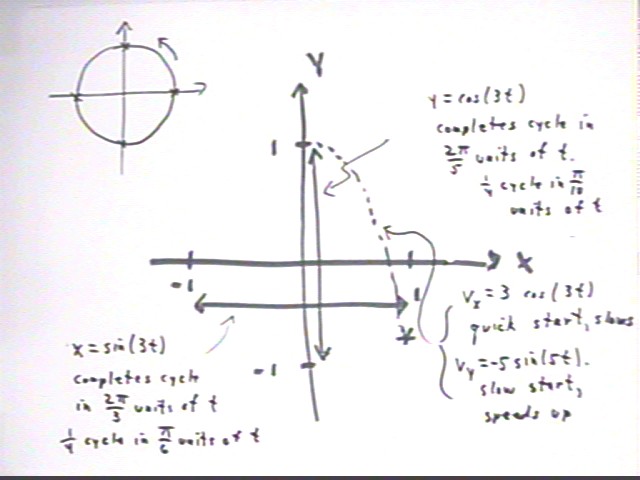
Calculus I Quiz 1115
If x = sin(3 t) and y = cos(5 t) then what does the graph of y vs. x look like for 0 <= t <= 2 pi?
Considering the reference-circle model of the sine and the cosine we see that

To find the position and velocity when x first reaches 1 we first set sin(3t) = 1 to determine that this occurs when t = pi/6.
Then plugging t = pi/6 into y = cos(3t) we find that y = -sqrt(3)/2, or about -.87.
The x and y velocities will be the derivatives vx = 3 cos(3t) and vy = -5 sin(5t). At t = pi/6 we find that vx = 0 (no surprise there) and vy = -2.5.
Thus when x = 1 for the first time we have a velocity of 2.5, directed downward in the y direction.
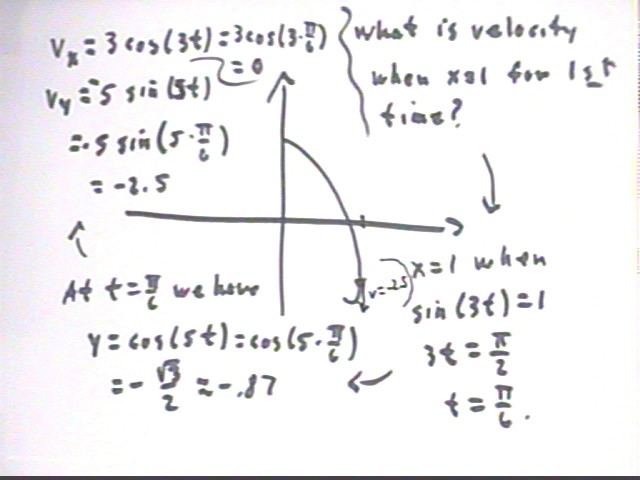
The acceleration of gravity at distance r from the center of the Earth, with r given in units of Earth radii, is
g = 9.8 / r^2, r >= 1.
The function g = 9.8 / r^2 has the graph shown below. The r = 1.2 point is (1.2, 6.81) and the slope is dg / dr = - 19.6 / r^3 evaluated at r = 1.2 to give us dg / dr = -11.34, approx..
This yields tangent line g = 20.418 - 11.34 r.
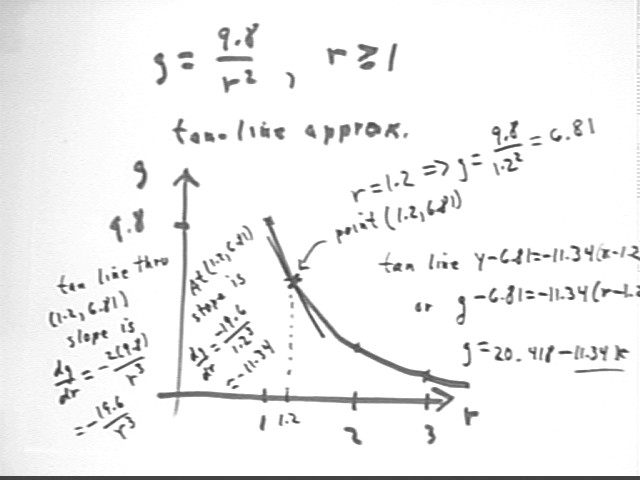
The change in g corresponds to a change of `dr = .1. The tangent-line approximation to this change could be found by plugging r = 1.3 into the equation of the tangent line and subtracting the r = 1.2 value from the approximate r = 1.3 value that results. However there's a simpler way.
The figure below shows the geometry of the situation. The change along the tangent line will be the change `dg, which is a 'rise', corresponding to the 'run' `dr = .1. Since we know that the slope is -11.34, approx., it is easy to find the tangent-line approximation to `dg.
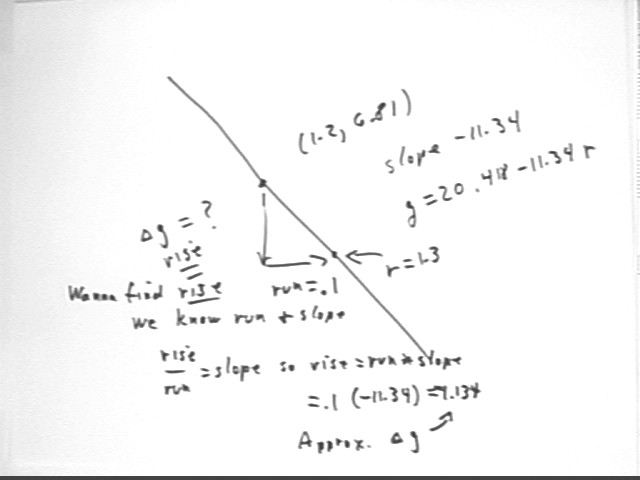
Generalizing this approach, at the unspecified coordinate r we have g = 9.8 / r^2, so our graph point is (r, 9.8 / r^2) and the slope is dg / dr = -19/6 / r^3.
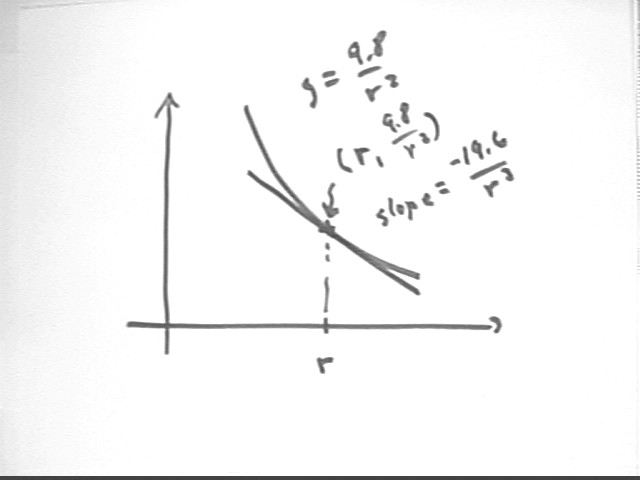
To find an approximate `dg corresponding to a given `dr we multiply `dr by the slope, obtain the approximation `dg = -19.6 / r^3 * `dr.
Approximating the change we found previously we find that for `dr = .1 and r = 1.2 the change in g is approximately `dg = -19.6 / (1.2)^3 * .1 = -1.134, the same result we obtained before.
The expression `dg = -19.6 / r^3 * `dr can be applied to any r and any `dr; however for smaller `dr we get a better approximation to `dg.
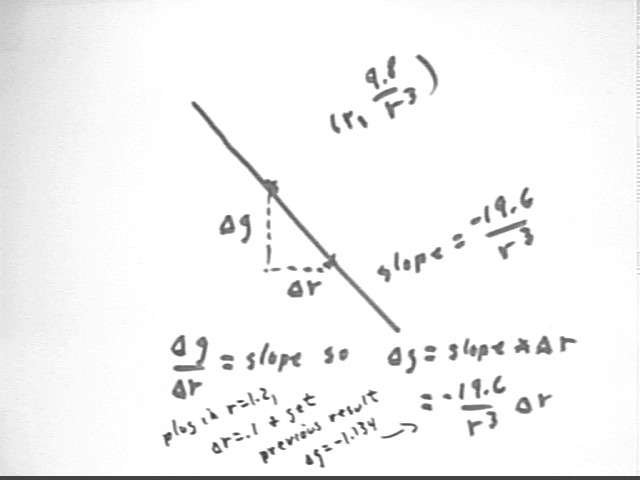
The period of a pendulum is T = .2 sqrt(L).